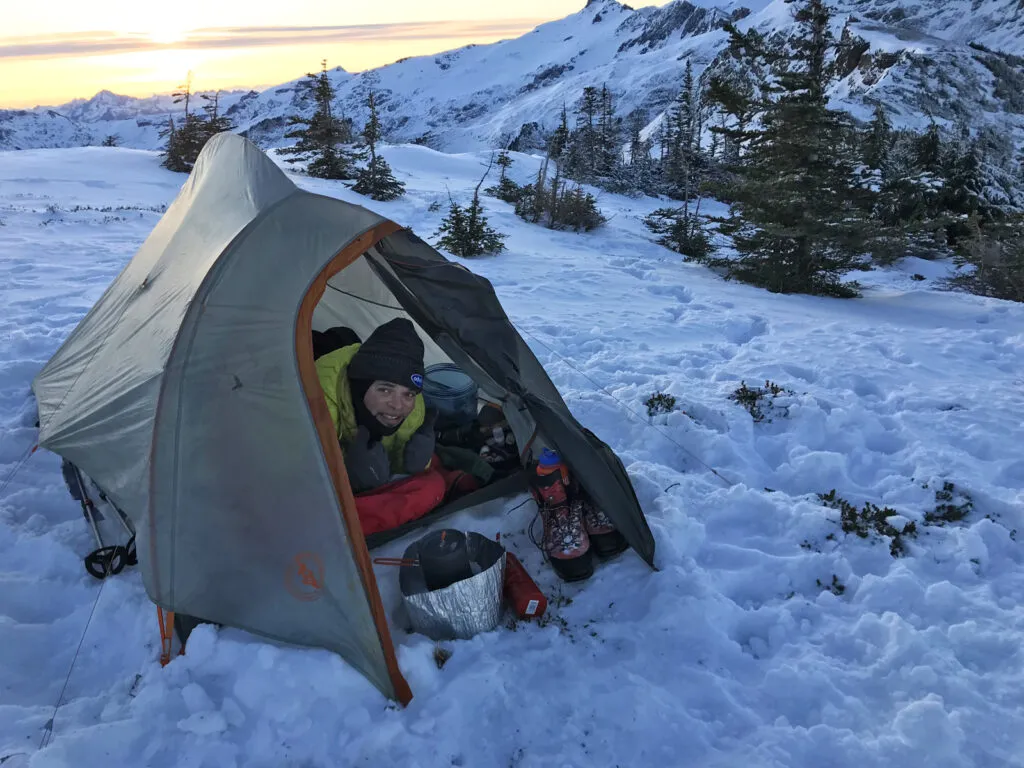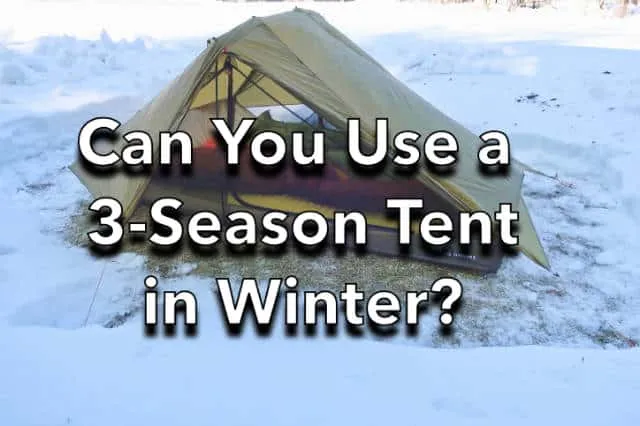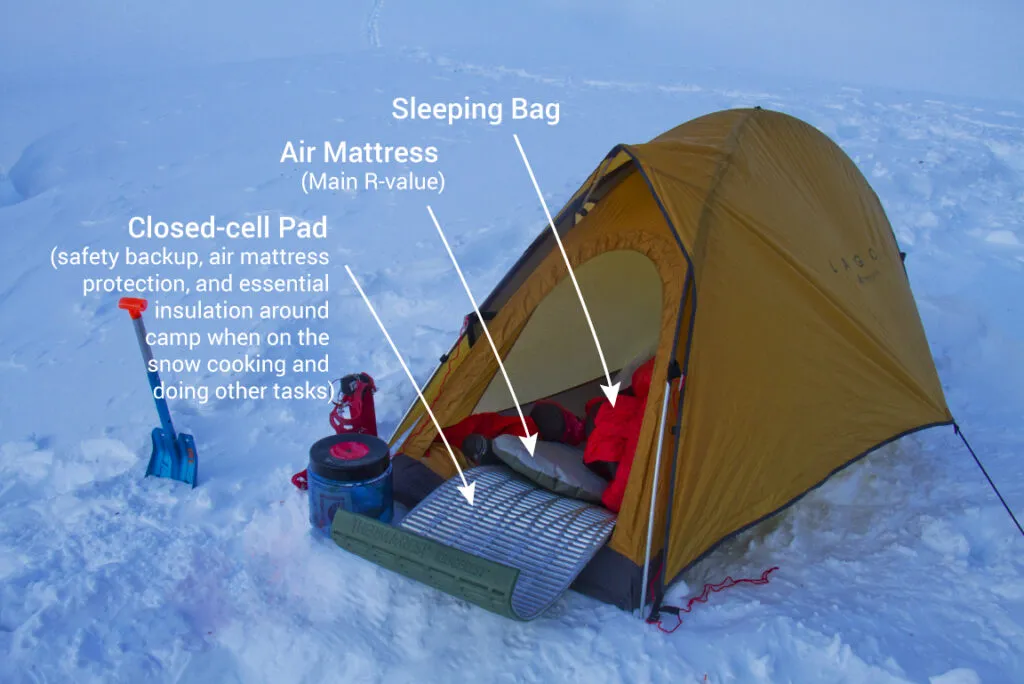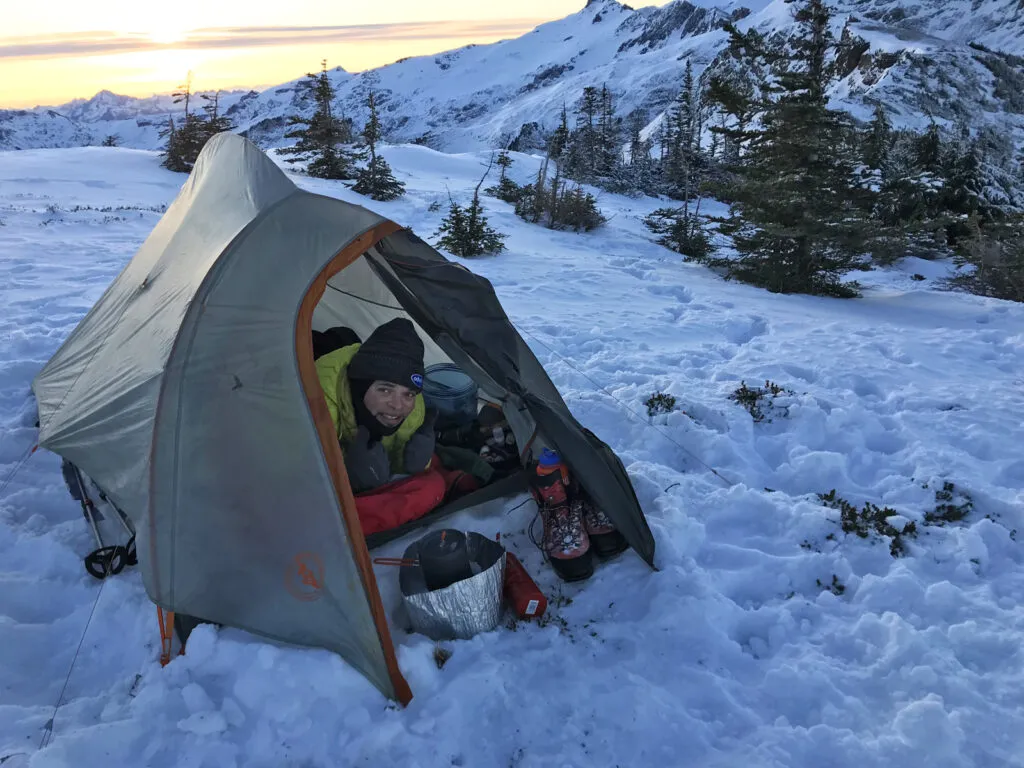Winter camping with a 3 season tent in winter conditions is absolutely possible with the right knowledge and preparation. I've spent countless nights testing various three-season tents in snow, wind, and freezing temperatures across the Pacific Northwest. This comprehensive guide will show you exactly when and how to safely use your 3-season tent for winter adventures, covering everything from winterization techniques to essential gear upgrades that can make the difference between a comfortable night and a miserable experience.
Understanding the Differences Between 3-Season and 4-Season Tents

Having tested numerous tents in harsh winter conditions, I can tell you that the distinction between 3-season and 4-season tents isn't just marketing fluff. When I first attempted using a 3 season tent in winter during a February camping trip in the Cascades, I quickly learned what separates these two categories. The primary differences lie in structural design, fabric weight, and ventilation systems.
Three-season tents typically feature lighter fabrics, more mesh panels for ventilation, and simpler pole structures designed for spring, summer, and fall conditions. The fly often doesn't extend all the way to the ground, leaving gaps that promote airflow but can allow snow infiltration. During my winter testing, I noticed that most 3-season tents have significantly more ventilation than their 4-season counterparts, which can be both a blessing and a curse in winter conditions.
Four-season tents, conversely, use heavier fabrics with fewer mesh panels, extended flies that reach the ground, and more robust pole systems designed to handle snow loading and high winds. The biggest difference I've observed is snow load capacity. While a typical 3-season tent might struggle with more than 3 inches of fresh snow, a 4-season tent can handle significantly more accumulation without structural compromise.
Temperature difference is another crucial factor. In my field tests, a standard 3-season tent provides only about 5-7 degrees Fahrenheit of warmth above ambient temperature, while properly winterized versions can achieve 10-15 degrees. This seemingly small difference becomes critical when you're dealing with temperatures well below freezing and every degree counts for comfort and safety.
When a 3-Season Tent is Suitable for Winter Camping
Not all winter camping requires a dedicated 4-season tent. During my extensive testing across various winter conditions, I've identified specific scenarios where a 3 season tent in winter performs admirably. The key is understanding your environment and having realistic expectations about weather conditions.
Ideal conditions for using a 3-season tent in winter include temperatures above 20°F (-7°C), wind speeds below 25 mph, and light to moderate snowfall expectations. I've successfully used 3-season tents in temperature ranges down to 15°F with proper preparation and backup plans. The tent must have aluminum or carbon fiber poles, as fiberglass poles become brittle and prone to failure in freezing conditions.
Site selection becomes absolutely critical when using a 3-season tent in winter. During my winter camping adventures, I've learned that camping below treeline offers natural wind protection that can make or break your experience. Trees provide crucial wind breaks, reduce snow accumulation on your tent, and create microclimates that are several degrees warmer than exposed areas.
Weather forecasting accuracy is your best friend when planning to use a 3-season tent in winter conditions. I never venture out without checking multiple weather services and having contingency plans. If the forecast shows heavy snow (more than 4 inches), sustained winds over 30 mph, or temperatures below 10°F, I automatically switch to my 4-season tent or postpone the trip entirely.
Important Safety Note: Always inform someone of your winter camping plans and carry emergency communication devices when using a 3-season tent in winter conditions.
Essential Winterization Techniques

Winterizing a 3 season tent in winter requires systematic modifications to address insulation, ventilation, and structural concerns. Through years of trial and error, I've developed a reliable winterization process that dramatically improves comfort and safety. The first step involves sealing unnecessary ventilation while maintaining enough airflow to prevent dangerous condensation buildup.
Creating wind barriers is absolutely essential when using a 3-season tent in winter conditions. I always carry a lightweight tarp and paracord to create windbreaks on the upwind side of my tent. Building snow walls around the tent base serves multiple purposes: it blocks wind infiltration, provides additional insulation, and creates a more stable foundation. The walls should be about 18-24 inches high and extend 2-3 feet from the tent walls.
Ground insulation modifications are crucial for winter comfort. I replace my standard sleeping pad with a combination system: a closed-cell foam pad (R-value 2-3) topped with an insulated air pad (R-value 4+). This combination provides an effective R-value of 6-7, sufficient for most winter conditions. Additionally, I use a groundsheet that extends beyond the tent footprint to create a thermal barrier and prevent ground moisture from affecting the tent floor.
Ventilation management becomes a delicate balance in winter. While you want to seal most ventilation to retain heat, complete sealing leads to dangerous condensation and ice formation. I typically keep one small vent partially open at the peak of the tent and ensure the door remains slightly unzipped at the top. This creates a gentle airflow that prevents condensation while minimizing heat loss.
Perfect for winter modifications with its robust construction and excellent pole system.
Snow Anchoring and Staking Systems
Standard tent stakes become useless in snow, making proper anchoring the difference between a secure shelter and a tent that blows away. During my winter camping experiences, I've learned that successful snow anchoring requires specialized techniques and equipment. The key is understanding that you're working with a completely different medium than soil or sand.
Snow stakes are the most reliable option for anchoring a 3 season tent in winter. These specialized stakes feature wider surfaces and different designs compared to standard tent stakes. I prefer aluminum snow stakes that are 12-15 inches long with a broad, flat design that distributes load across a larger snow surface. The stakes must be buried horizontally (deadman style) rather than driven vertically into the snow.
Creating deadman anchors using natural materials is an essential backup skill. I always carry extra paracord and know how to create effective anchors using logs, rocks, or even stuff sacks filled with snow. The technique involves digging a hole about 18 inches deep, placing your anchor perpendicular to the guy line tension, and packing snow firmly around it. After 15-20 minutes, the snow sets and creates a remarkably strong anchor point.
Guy line management becomes critical in winter conditions. I use reflective guy lines that remain visible in low light and don't stretch when frozen. The lines should be tensioned when the tent is warm, as they'll tighten when temperatures drop. I also carry extra guy lines and hardware, as frozen zippers and buckles can fail, requiring field repairs.
Essential for securing your tent in snow conditions - includes carrying case and instruction guide.
Maximizing Insulation and Warmth

Warmth management in a 3 season tent in winter requires a comprehensive approach that goes far beyond just having a good sleeping bag. Through countless cold nights, I've learned that your sleeping system is only as good as its weakest component. The ground robs more heat than the air in winter conditions, making proper insulation beneath you absolutely critical.
Your sleeping pad system should have an R-value of at least 5 for winter camping, but I recommend 6+ for extended comfort. I use a combination approach: a closed-cell foam pad (like the Therm-a-Rest Z-Lite) as the base layer, topped with an insulated air pad. This combination provides redundancy if one pad fails and creates multiple insulation layers that trap warm air. The foam pad also prevents punctures to the air pad from sharp snow or ice.
Sleeping bag selection and usage require winter-specific considerations. I learned the hard way that choosing the best 3-season tent means little if your sleeping system can't handle the conditions. Your sleeping bag should be rated at least 10-15 degrees below the expected nighttime low. Down insulation performs better in dry conditions, while synthetic insulation maintains warmth when damp.
Heat retention strategies extend beyond just your sleeping system. I always change into dry clothes before getting into my sleeping bag, as moisture is the enemy of insulation. Using a sleeping bag liner adds 5-10 degrees of warmth and helps keep your bag clean. Hot water bottles or heated gel packs can provide immediate warmth, but must be used safely to avoid burns or leaks.
ASTM tested R-value 6.2 ensures warmth in extreme cold conditions - perfect for winter camping.
Best 3-Season Tents for Winter Use
Expert comparison of 3-season vs 4-season tents in winter conditions
Not all 3-season tents are created equal when it comes to winter performance. Through extensive testing, I've identified specific models that excel in winter conditions with proper preparation. The key characteristics include robust pole systems, extended rain flies, and construction quality that can handle temperature extremes and moderate snow loads.
The North Face Stormbreak series stands out for winter use among 3-season tent 1-person options. Its X-frame design provides excellent wind resistance, while the extended fly reaches close to the ground, reducing snow infiltration. I've used the Stormbreak 1 in temperatures down to 18°F with proper winterization techniques, and it performed admirably.
The Marmot Tungsten series offers excellent winter potential with its robust construction and versatile design. The aluminum pole system handles stress well, and the vestibule space provides crucial gear storage in winter conditions. The fly design allows for effective snow wall construction, and the overall build quality inspires confidence in challenging conditions.
For ultralight winter camping, the NEMO Hornet and Big Agnes Fly Creek series represent the cutting edge of lightweight winter-capable design. These tents push the boundaries of what's possible with a 3 season tent in winter, though they require more careful site selection and weather assessment. Their weight savings make them ideal for winter backpacking where every ounce matters.
Proven winter performance with X-frame design
Excellent build quality for winter conditions
Ultra-lightweight option for experienced winter campers - advanced weather resistance technology.
Conclusion
Using a 3 season tent in winter is not only possible but can be highly effective with proper preparation and realistic expectations. Through years of winter camping experience, I've learned that success depends more on understanding your limitations and preparing accordingly than on having the most expensive gear. The key is matching your tent choice to expected conditions and having solid backup plans.
The most important lessons from my winter camping adventures are: always prioritize safety over comfort, understand your tent's limitations, and never venture into conditions beyond your experience level. A properly winterized 3-season tent can handle surprisingly harsh conditions, but it requires skill, preparation, and constant vigilance. Start with mild winter conditions and gradually build your experience and confidence.
Remember that using a 3-season tent in winter is as much about the skills you develop as the gear you carry. Practice your winterization techniques, master snow anchoring, and develop a systematic approach to camp setup. With experience and proper preparation, your 3-season tent can become a reliable winter shelter that opens up incredible cold-weather adventures.
Winter camping rewards those who prepare thoroughly and respect the environment. Whether you're using a 3-season tent or upgrading to a 4-season model, the principles remain the same: understand your gear, prepare for the conditions, and always prioritize safety. The silence of a winter landscape, the sparkle of snow under starlight, and the satisfaction of a warm night in challenging conditions make all the preparation worthwhile.
Ready to Start Your Winter Camping Adventure?
Don't let winter stop your outdoor adventures. With the right preparation and gear, your 3-season tent can handle more than you might think.
Shop Premium Winter Camping Gear

